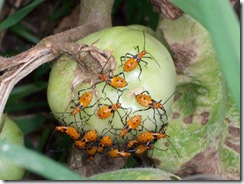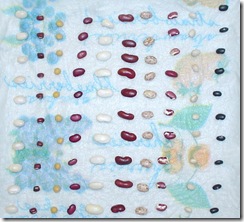BEANS, BUSH: 'Dwarf French Tendergreen,' 'Jade,' 'Contender,' 'Derby'
BEETS: 'Detroit Dark Red,' 'Pacemaker III'
BROCCOLI: 'Bonanza,' 'Early Divided,' 'Green Comet,' 'Packman,' 'Premium Crop'
BRUSSELS SPROUTS: 'Tasty Nugget,' 'Diablo'
CABBAGE: 'Early Jersey Wakefield,' 'Point One,' 'Sombrero,' 'Ruby Perfection'
CARROTS: 'Bolero,' 'Danvers,' 'Scarlet Nantes,' 'Texas Gold Spike,' 'Vita Sweet'
CAULIFLOWER: ''Majestic,' 'Snow Crown,' 'Violet Queen'
COLLARDS: 'Blue Max,' 'Champion,' 'Flash,' 'Georgia'
CUCUMBERS: 'Diva,' 'Sweet Success,' 'Spacemaster,' 'Soo Yoh Long'
GARLIC: 'Texas White'
KOHLRABI: 'Early White Vienna,' 'Purple Danube,' 'Prague Early Forcing,' 'Grand Duke'
LETTUCE: 'Red Sails,' 'Buttercrunch,' 'Black Seeded Simpson,' 'Oak Leaf,' 'Lollo Roso,' 'Vulcan' 'Salad Bowl,' 'Little Caesar' (romaine).
MUSTARD: 'Florida Broadleaf,' 'Savannah,' 'Tendergreen'
ONION, BULB, SET: 'Granex,' 'Grano 1015 Y' 'Grano 502'
POTATOES: 'Kennebec,' 'Red LaSoda'
RADISH: 'Champion,' 'Cherry Belle,' 'Early Scarlet Globe,' 'Easter Egg,' 'White Icicle'
SPINACH: 'Bloomsdale,' 'Melody,' 'Space,' 'Tyee'
SUMMER SQUASH 'Early Yellow Crookneck,' 'Dixie,' 'Goldbar,' 'Multipik'
TOMATOES: 'Early Girl,' 'Celebrity,' many others.
TURNIPS: 'Tokyo Cross' (roots), 'Purple Top White Globe' (roots) 'Seven Top' (greens)
See more varieties at chron.com/plants












